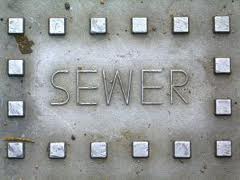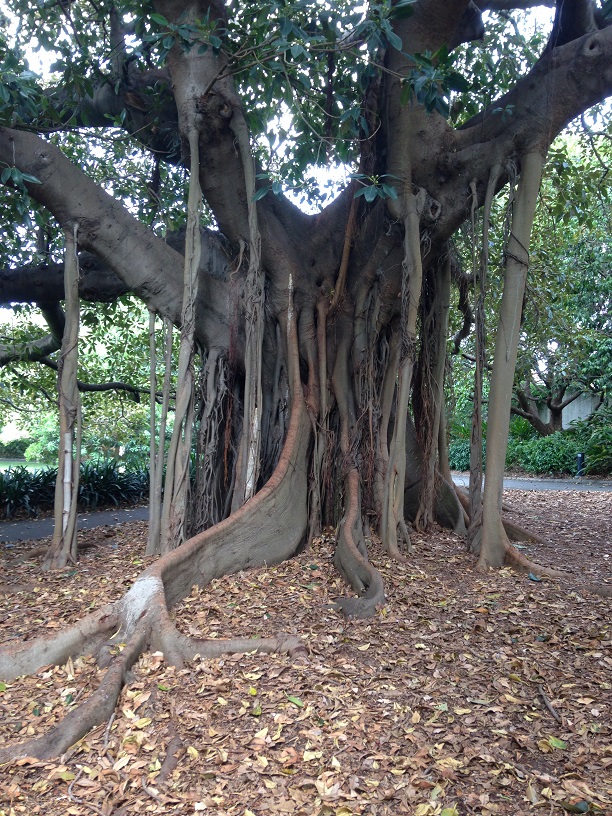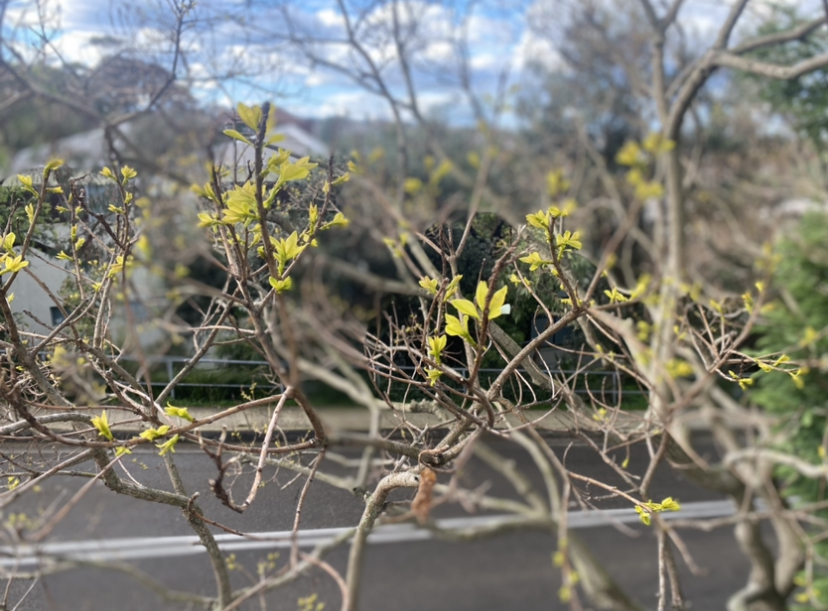Archives
Stop Tree Roots in Drains. Home Buyers Guide.
Vaporooter is the best way to Stop Tree Roots in Pipes.
If you’re a potential Home Buyer who wants to buy a house in a Tree Lined Street, and you want to know how you’ll keep the tree roots from those trees out of your brand-new home, then call me.
I can send you a copy of my little book, The Home Buyers Guide to Tree Root Control.
Everything you need to know about keeping tree roots out of your sewer pipes.
Wherever you are in Australia… Call me on 1800 637 600. I’ll be happy to guide you through it.
Or go to www.VaporooterAustralia.com.au
Spring is coming and your tree roots are in the gym
As spring approaches and the temperatures start to rise, trees begin to prepare for their active growth phase. During winter, many trees enter a state of dormancy, where their metabolic processes slow down to conserve energy and protect themselves from cold temperatures. As spring arrives, the tree root system becomes quite active in response to changing environmental conditions. Here’s what the tree root system is doing as spring approaches:
- Absorbing water and nutrients: As the ground warms up and rainfall increases, the tree roots become more active in absorbing water and essential nutrients from the soil. This is crucial for supporting the tree’s growth and development during the upcoming growing season. Your sewer pipes are an easy source of water and nutrients
- Sending signals to the rest of the tree: The root system communicates with the above-ground parts of the tree through chemical and hormonal signals. This communication helps coordinate the tree’s growth and responses to the environmental cues.
- Extending and branching out: Tree roots grow and expand as the soil becomes more suitable for root growth. The root system will extend further into the surrounding soil, and new root branches will form to explore fresh areas for water and nutrients.
- Establishing new relationships: Many trees form symbiotic relationships with fungi in the soil. These fungi help the tree roots by extending their nutrient-absorbing capacity, and in return, the tree provides sugars produced through photosynthesis to the fungi. During spring, these relationships become more active and beneficial.
- Repairing and regenerating: Like any living organism, tree roots may experience some damage or stress during winter. As spring arrives, the tree allocates resources to repair and regenerate any damaged parts of the root system.
- Preparing for shoot growth: The root system plays a crucial role in providing the necessary resources for the tree’s above-ground parts, such as leaves, branches, and buds. As the tree prepares for new shoot growth in spring, the tree root system ramps up its activity to support the upcoming foliage and flower production.
In summary, the tree root system becomes highly active during late winter and early spring, absorbing water and nutrients, establishing beneficial relationships with fungi, extending into new areas, and coordinating with the rest of the tree to support its growth and development throughout the upcoming season.
Which tree roots invade sewer pipes? Deciduous or Evergreen?
85% of Blocked Drains are caused by tree roots…
Deciduous tree roots can be more invasive to sewer pipes than evergreen tree roots. Deciduous trees have a more aggressive root system that tends to spread out widely in search of moisture and nutrients. This can cause the roots to grow into pipes and cause blocked drains or even greater damage.
On the other hand, evergreen tree roots tend to grow deeper in search of water and are less likely to spread out widely. As a result, they are less likely to cause problems with pipes. However, it’s worth noting that the infestation of tree roots can vary depending on the species of tree and the soil conditions.
It’s also worth noting that it’s not only the species of tree that matters, but also the location where the tree is planted. A tree planted near a sewer pipe is more likely to cause damage to the pipe, regardless of whether it’s an evergreen or deciduous tree.
It’s always good idea to consult with an arborist or a plumber before planting a tree near existing sewer pipes or underground utilities.
When fixing your blocked drains, a “one size fits all” approach is outdated!
The best approach depends on your circumstance and specifically, what is going on with the drains at your place.
If you’re not sure which method is best for your circumstance, ask me.
Call 1800 637 6oo
What is Pipe Relining?
Pipe relining has become a fashionable thing.
There is a place for pipe relining usually when the structure of the pipe has been compromised or broken.
Pipe relining involves inserting a liner, usually fibreglass resin, into the existing drain pipes, creating a new, seamless, and durable pipe within the old one, without the need for excavation.
This process is a little disruptive but, less disruptive, faster, and more cost-effective than traditional pipe replacement. By relining the pipes, you can restore the flow and function of your sewer system, prevent future damage, and extend the life of your pipes.
We have used pipe relining to repair broken and damaged pipes especially in those few situations where excavation is difficult or dangerous, like under a roadway or when the pipes are buried deep in the ground on a tight work site.
Some plumbers will recommend pipe relining for a simple blocked drain caused by tree roots where the roots have just grown through one of the many pipe joints in an earthenware pipeline.
I’ve seen multiple instances where after relining a section of the pipe, tree roots just grow along the pipe line and find another pipe joint to grow through.
At the time of writing this, in Sydney Australia, the cost to reline one metre of 100mm or 4″ pipes is about $1,000.00 per metre.
That means, to reline 30 metres or 100ft of sewer pipe will cost about $30,000. And that’s a lot of money!
You can Click here to see an earlier post about pipe relining costs.
If you’re researching options on How to Stop Tree Roots in Drains or you’re unsure if pipe relining is the answer to your problem, I invite you to call me on 1800 637 600.
Condensation attracts tree roots to sewer pipes
Did you know tree roots are attracted to condensation on the inside of drain pipes?
Trees are naturally drawn to moisture and nutrients, and condensation can provide a source of both. The roots of a tree can detect the presence of moisture inside a pipe and grow towards it. As the roots grow, they can cause blockages or damage to the pipes. This can be more prevalent in areas with high humidity.
It’s also worth noting that tree roots are also attracted to other sources of moisture such as leaks, cracks or joints in the pipe and then the waste material inside the pipe. Tree roots will seek the nutrients found in the waste material in the sewer pipes.
It’s important to note that tree roots can cause damage to pipes no matter where the pipes are located, whether it’s near or far from the tree.
We have seen instances where tree roots will grow above the ground to get into sewer pipes that have been laid above ground under a house.
If you’ve had a blocked drain caused by tree roots, its definitely worth having your plumber regularly checking your pipes and addressing any issues promptly to stop blockages and prevent further damage caused by tree roots.

How do Tree roots grow?
Tree roots grow in different ways depending on the species of tree.
Some trees have a taproot system, where the main root grows straight down and branches off into smaller roots.
Other trees have a fibrous root system, where many small roots grow out in all directions from the base of the tree.
Roots also grow towards moisture and nutrients, so they may grow deeper in dry or nutrient-poor soil and closer to the surface in moist or nutrient-rich soil.
Additionally, tree roots can grow laterally, horizontally or vertically depending on the species of the tree and the soil conditions.
How do you Stop Tree roots in Drains?
Its called Vaporooter. Click here to find out more.
Do summer rains make stronger tree root growth?
Summer rain can encourage stronger tree root growth. Trees need water to survive, and during the summer months, when the weather is hot and dry, adequate water is essential for the tree’s survival. Rainfall during the summer can provide the necessary water for the tree’s roots to absorb and grow.
Additionally, summer rain can also help to loosen compacted soil, allowing the roots to penetrate deeper and spread out more easily. This can lead to stronger, healthier root systems that are better able to support the tree.
However, it’s worth noting that heavy rainfall can also cause soil erosion and can lead to waterlogged soil, which can suffocate tree roots and inhibit their growth. It’s also good to note that, while water is important for tree growth, too much water can also be harmful.
It’s important to note that while water is important, it’s not the only factor that affects tree growth. Other factors like temperature, sunlight, soil nutrients, and pests also play a significant role. A well-balanced environment with adequate water and other factors is essential for a tree’s healthy growth.
Whether we have wet or dry summers, the nutrients or natural fertiliser available in sewer pipes makes them a magnet for the searching tree roots of many species. Our experience has seen that if trees can “drink” the abundant water available during summer rains, the tree roots will swell and cause more blocked drains.

Vaporooter – There are some setup costs
G’day! Its Dave Conroy. I’m here today to talk about Vaporooter.
There are some set-up costs if you are considering putting Vaporooter down your sewer pipes if you’ve got repeat blockages caused by tree roots.
The setup costs are a one off thing and, what they include is putting a drain camera through your pipes to survey exactly what is going on inside your pipes to determine if your pipes are actually suitable for a Vaporooter application. 9/10 times they are!
Now, the most common question people ask me is “Does the product work?” Yes, It does!
We’re actually applying Vaporooter at this property in Vaucluse in Sydney’s eastern suburbs this morning. This is a client who has had it applied for five years in a row.
So, to sumarise:
Yes, there some setup costs.
Yes, It does work.
Yes, you need to have it applied annually.
If you’ve got any questions, through Vaporooter Australia, please contact me on 1800 637 600
Or go to our website: VaporooterAustralia.com.au
Vaporooter or pipe re-lining – A cost comparison
Hello, its Dave Conroy here and I’m here to talk about my favourite subject, stopping tree roots in sewer pipes.
And in particular with Vaporooter!
Now, one of the most common questions that is asked of me is “Should I re-line my pipes or Should I use Vaporooter?”
Simply put, relining is a great process in the right place. To re-line a single metre, one metre of pipeline here in Sydney will cost you about one thousand dollars. For that amount of money, you could treat a 30 metre section of pipeline! So, economically, Vaporooter is a great option.
To reline 30 metres it’s about 30 grand.
To treat 30 metres with Vaporooter will cost you about $1000.00. It will keep tree roots away and give you an opportunity to work out what to do with your pipes in the long term.
If you have any questions about whether you should re-line or apply Vaporooter to your home,
Call me on 1800 637 600 or go to www.VaporooterAustralia.com.au
Tree roots don’t like wet feet
Even though tree roots get into pipes seeking water, they don’t like to be in the water all the time.
Excavated soil allows the fine tree roots to move along the top of and into the pipe joints and then down into the water flow.
In permanently water charged ground, tree roots rarely appear in the sewer because they don’t like to be continually immersed in water.



